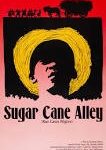

By John Myers
Curriculum Diversity Part 4
This series has aimed to:
– provide useful resources for promoting curriculum content that is more inclusive of our diversity*
– identify ways to overcome the challenges within a crowded curriculum** plus the complexities of issues when we step into the waters of diversity while recognizing the realities of our busy professional and personal lives
– offer ways to identify where we are in our implementation.
In this concluding perspective we return to simple plug and play looking at tech media resources such as Youtube videos. With a length of 10-20 minutes such videos can be set up, viewed, and debriefed in a classroom period and can serve to begin an inquiry.
While we all come across neat stuff from time to time we may lack the time to design specific lessons for such newfound “gems”. Before I offer 5 samples and brief synopses, here are two co-operative small group learning approaches we can use with any video***.
Connect, Extend, Challenge
In all cases a strategy might be the “Connect, Extend, Challenge” visible thinking routine for assessing ANY Reading, Presentation or Workshop. As you read, listen or view
– CONNECT: How are the ideas and information presented CONNECTED to what you already knew (or think you know)?
– EXTEND: What new ideas did you get that EXTENDED or pushed your thinking in new directions or helped you revise and reconsider previous knowledge and understanding?
– CHALLENGE: What is still CHALLENGING or confusing for you to get your mind around? What questions, wonderings or puzzles do you now have? These can serve to begin or extend an inquiry.
This routine connects new ideas to old knowledge. A variation for getting students to work with information is “Pairs View”:
Pairs View (Morton, 1996)
When showing a video or delivering a lengthy presentation, students need to construct meaning: a necessary step in learning facts and concepts. Constructing meaning consists of linking old knowledge to new knowledge, making predictions, verifying them and filling in a lot of unstated information. For example, your prior knowledge about indigenous history, identity and culture will enable you to make predictions about what you might see in a TED talk about issues related to reconciliation or residential schools. Such predictions are verified or refuted as you watch the film. Finally, what you know helps you fill in pieces of unusual information; e.g., children in residential schools were forced to change their birth names to conform with colonial demands.
Pairs View helps students understand as follows.
1. Pair students A and B.
2. When showing a lengthy film or even a TED talk, stop every ten minutes or so (five minutes for younger children)
3. When the film is stopped for the first time, tell the pairs that A (or B) will be the summarizer. Declaring the roles at the last minute keeps both members of the pair accountable. If you decide that A is the summarizer, then A
o summarizes for B the information and ideas presented so far
o tells B what they find most interesting about what was presented
o identifies anything that was confusing and tries to clarify, with B’s help
4. After three minutes, the film is turned on again
5. After a suitable period, the film is again stopped and B leads. Or you can repeat with A. The stress is on individual accountability so that both members have to be focused. It is hard to hide in a pair!
Alternatively, the teacher can provide a worksheet or a series of prompts to spur discussion and to enable students to record appropriate points. Prompts might ask students to summarize, predict, elaborate, describe, determine the main idea, compare, formulate questions, and identify aspects that interested or confused them about the presentation to date. Of course the “connect, extend, challenge” routine can be used here.
In the case of podcasts SPOILER ALERT! Pairs View becomes Pairs Listen.
Five Sample Videos Illustrating Issues in Diversity
1. There are many samples looking at events connected to the internment of Japanese-Canadians in WW2. Swimming Upstream documents the Japanese Canadians’ case for redress by the BC government for its policies promoting ethnic cleansing, dispossession and community destruction. There are some interesting and perhaps surprising comparisons made to Canadian and American situations in the 20th century.
2. As part of their Social Studies and English classes at Lucerne Secondary School in the West Kootenays where I used to live and work, students created 10 short films under the guidance of their teachers Terry Taylor and Gary Parkstrom and filmmakers Moira Simpson and Catrina Megumi Longmuir over the course of just a few days. Telling The Stories of the Nikkei shows that oral history can encourage inter-generational learning.
3. Cedar and Bamboo was produced by the Chinese Canadian Historical Society of BC. It documents some of the complex relationships shared by early Chinese immigrants and Aboriginal peoples on Canada’s west coast by sharing the life experiences of four descendants of mixed heritage.
4. Secret Alberta: The Former Life of Amber Valley provides a link to the complexity of western settlement through this exploration of the Black experiences there. There were challenges and successes. Check out the comments section too****.
5. When Canada Said No, may be familiar to you if you have examined the plight of Jewish passengers on the MS St. Louis*****. .
Conclusion?
Ontario History and Social Sciences curricula may appear to be as inclusive as some of us wish, but the expectations are broad enough to incorporate all of the resources highlighted in this four-part series.
But wait! There’s more.
The cooperative structures introducing this perspective can be used with podcasts. You can explore diversity issues as deeply and as broadly as you wish with CBC’s The Secret Life of Canada . Even if episodes cannot easily fit into your teaching (this semester) you will learn a great deal as did I.
So, as Jean Luc Picard would say, “Engage.”
Endnotes
* We are aware of this issue in English Language Arts (ELA). A new resource (Swartz, 2020) while aimed at younger students offers ideas for all.
** The dilemmas around content are many (Myers, 2009, 2014). A recent take comes from a TVO podcast.
*** Co-operative learning is a powerful but often misunderstood approach to teaching and will be the subject of a future Perspective. Until then http://www.iasce.net is a portal.
**** In many cases comments to a post or article are revealing, though not always in a positive or accurate way. Media literacy ought to help students make sense of these.
***** For those who have used portions of Doing the Right Thing, published by the Canadian Race Relations Foundation and featured in Part two of this series can get a more detailed lesson plan to this video by completing the Feedback Form on page 38 of the Teachers’ Resource.
References
Morton, T. (1996). Co-operative Learning & Social Studies: Towards Excellence and Equity. Kagan Co-operative Learning Publishers, 1996.

